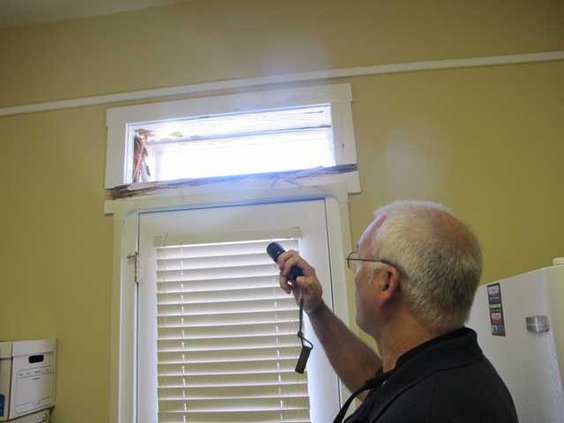New residents have come to Hinesville, but they’re not the type a community wants.
A species of termite normally rare to the Hinesville area was discovered last week in the office of a downtown law firm, and one exterminator says the species is becoming more common. Roger Hutchinson, Yates-Astro general manager for Hinesville, said the Arnold, Stafford and Randolph Law Firm’s exterior wall, which faces M.L. King Jr. Drive, was infested by a species of Formosan termites.
It’s the fifth case of Formosan termites his company has discovered in Hinesville.
"This particular termite is rare to this area, but we look for them to become more common," Hutchinson said as he peeled back part of a wooden window frame, causing thousands of the flying insects to fall on the window sill. "They’re much more aggressive than eastern subterranean termites. They’ll even bite you. This is the biggest infestation we’ve found, and all the ones we’ve found have been within a quarter-mile of here."
Hutchinson said the size of a normal colony is about 200,000, but the size of a Formosan colony is about a million. These termites not only attack a structure from below the earth but also from the air. He said they found three cases of Formosan termites in 2007 and one case in a downtown restaurant in 2008.
Hutchinson said these Asian termites are believed to have first come into this country during World War II through the New Orleans port. They’ve become an extreme problem in Southern Louisiana because in addition to destroying buildings, they also destroy telephone poles and invade living trees.
He paused for a moment and pointed to the large library of legal books and encyclopedias in a lawyer’s office. He said one thing they have to watch for is infestation in books too, as they’re made from wood. He said when they first discovered the infestation, they sprayed the affected outside surface area, knowing this would not destroy the colony.
"We sprayed a topical pesticide just to slow them down," Hutchinson said, explaining the legal team needed time to rearrange schedules as they wouldn’t be able to work while his pesticide team was ridding the office of termites. "We did a soil treatment (Wednesday). We (had) to fumigate the building with a chemical called Vikane to get to the whole colony. To do that, we (had to) cover this part of the building with a large tent."
His crew first went through each office within the building, collecting plants and anything consumable. He said the pesticide will leave no harmful residue after fumigation.
Hutchinson said the normal season for termites to swarm is February to May, but Formosan termites swarm in May and June. He strongly advises homeowners and business owners to visually inspect their building’s structure for signs of termites such as wood dust or shavings, discarded wings or mud mounds clinging to the walls, window and door frames or baseboards.
"You have to be on the lookout for them," Hutchinson said. "You want to avoid wood to ground contact with your building’s structure. If you think you have damage, call a pest control specialist and let him do a termite inspection."
He said the costs of termite damage can exceed the costs of fire, storm and flood damage.

